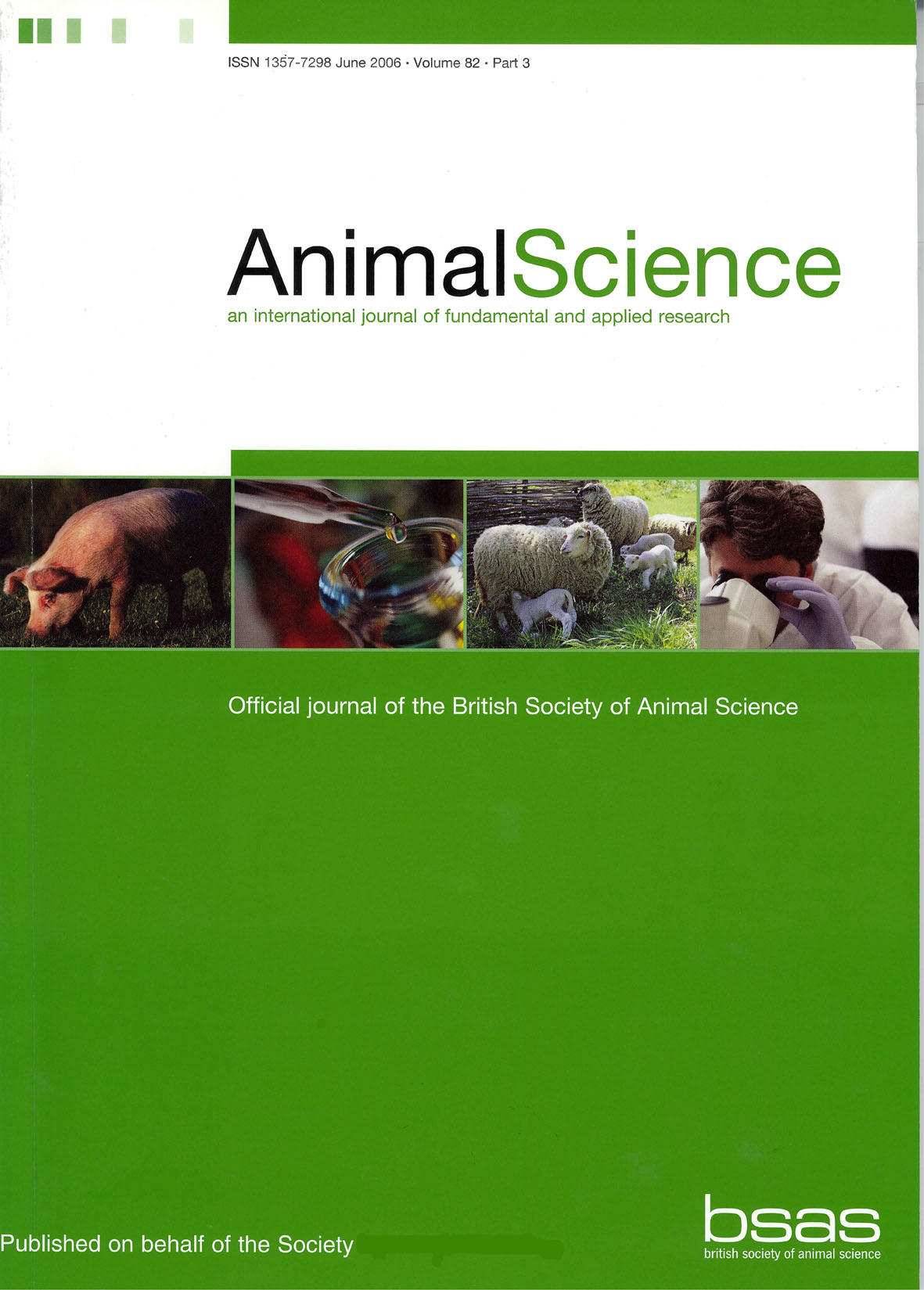Article contents
Effects of microwave irradiation on ruminal degradation and in vitro digestibility of soya-bean meal
Published online by Cambridge University Press: 09 March 2007
Abstract
This study was carried out to determine ruminal dry matter (DM) and crude protein (CP) degradation characteristics of untreated, 2-, 4- and 6-min microwave-treated soya-bean meal (SBM) by using nylon bags and sodium dodecyl sulphatepolyacrylamide gel electrophoresis (SDS-PAGE) techniques. Nylon bags of untreated or treated SBM were suspended into the rumen of three Holstein steers from 0 to 48 h, and data were fitted to non-linear degradation characteristics to calculate effective rumen degradation (ERD). There were significant differences (P < 0·05) for DM and CP degradation parameters between untreated and microwave-treated SBM. Microwave treatments decreased the water-soluble fraction and increased the potentially degradable fraction of CP. The degradation rate of the latter fraction decreased with these treatments. As a consequence, microwave treatments decreased (P < 0·05) ERD of CP. From densitometric scanning, SBM proteins were seen to be composed of two major components; β-conglycinin and glycinin, accounting for proportionately 0·30 and 0·40 of buffer-soluble SBM proteins, respectively. Electrophoretic analysis of untreated, 2-, 4- and 6-min microwave-treated SBM protein residues revealed that two of the subunits of β-conglycinin (α -and α) were degraded completely after 2, 4, 24 and 48 h, respectively, whereas the α subunit of this protein was more resistant to degradation. In untreated SBM, the two subunits of glycinin (acidic and basic polypeptides) were degraded in the middle of the incubation period, but in microwave-treated SBM were not degraded until 48 h of incubation. In vitro digestibility of ruminally undegraded CP of untreated and treated SBM increased (P < 0·05) with increases in rumen incubation time from 8 to 24 h. In conclusion, SBM proteins appeared to be effectively protected from ruminal degradation by a 4-min microwave treatment. SDS-PAGE results indicated that ruminally undegraded protein from untreated SBM was mainly composed of the basic subunit of glycinin, whereas that from microwave-treated SBM was composed of β-conglycinin and both basic and acidic subunits of glycinin.
- Type
- Research Article
- Information
- Copyright
- Copyright © British Society of Animal Science 2005
References
- 11
- Cited by


